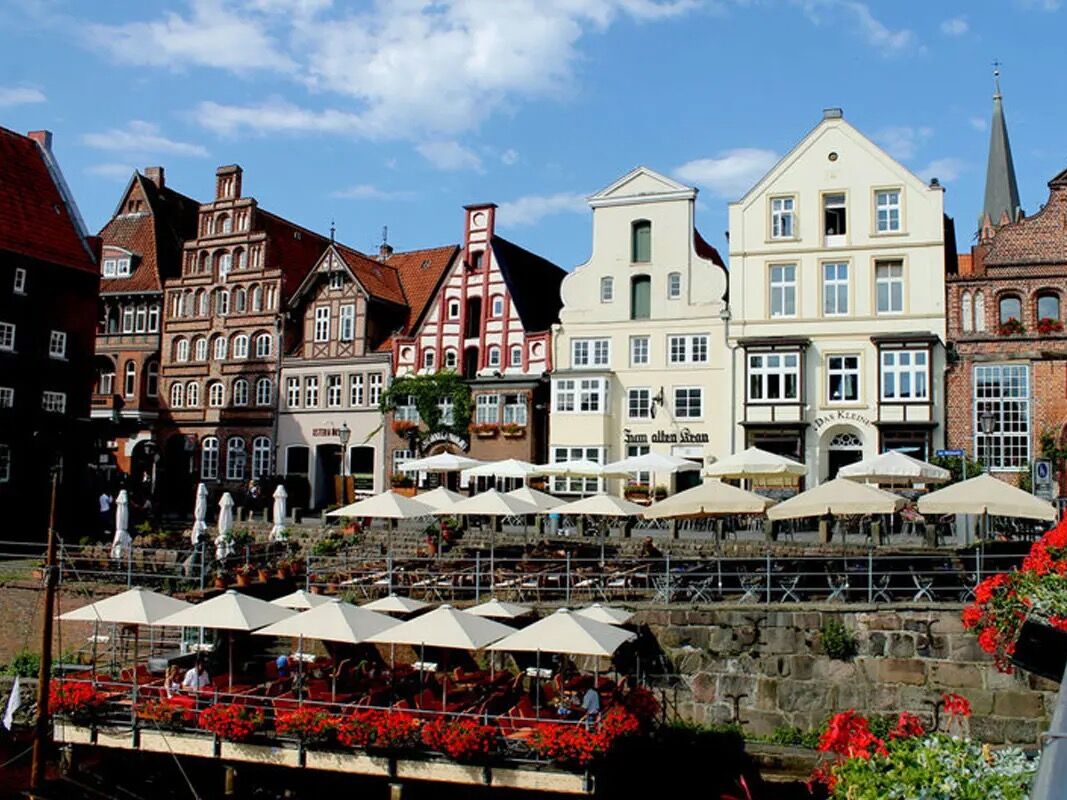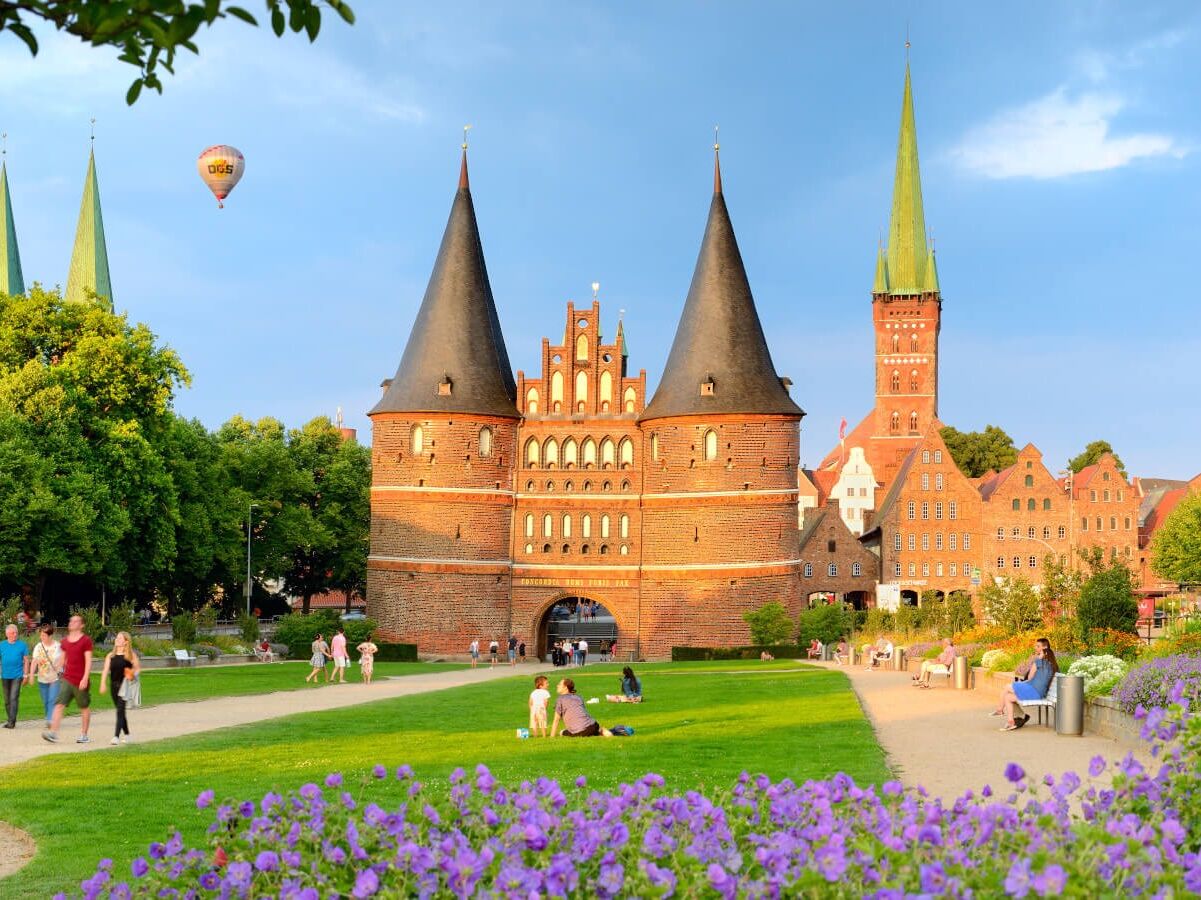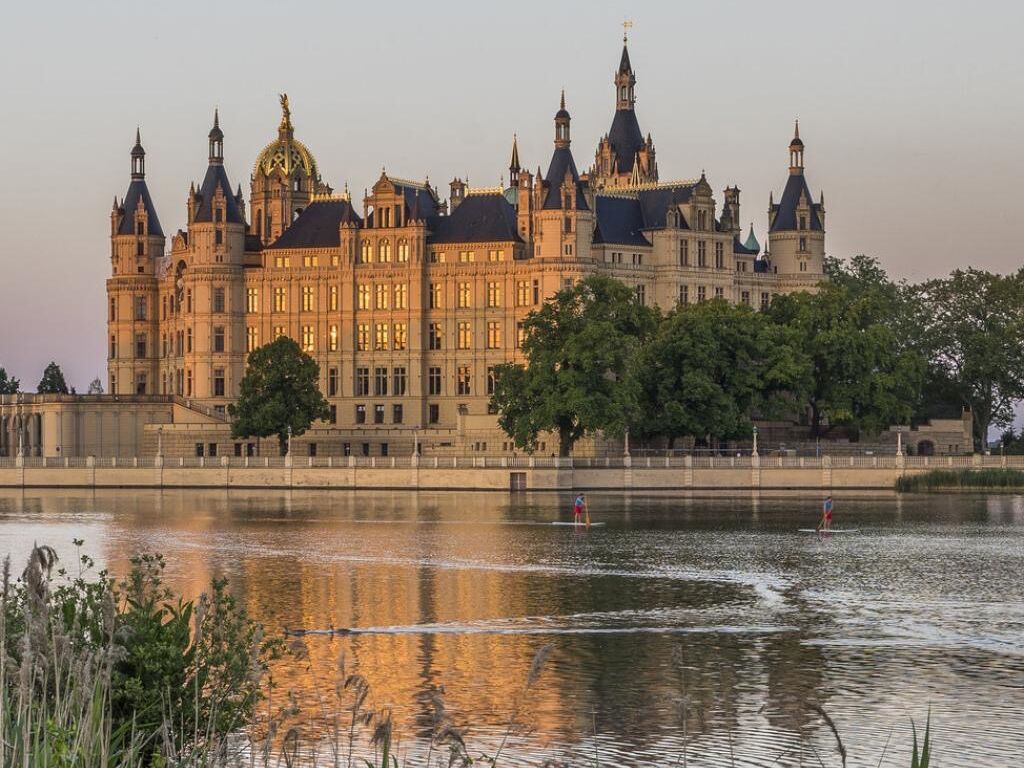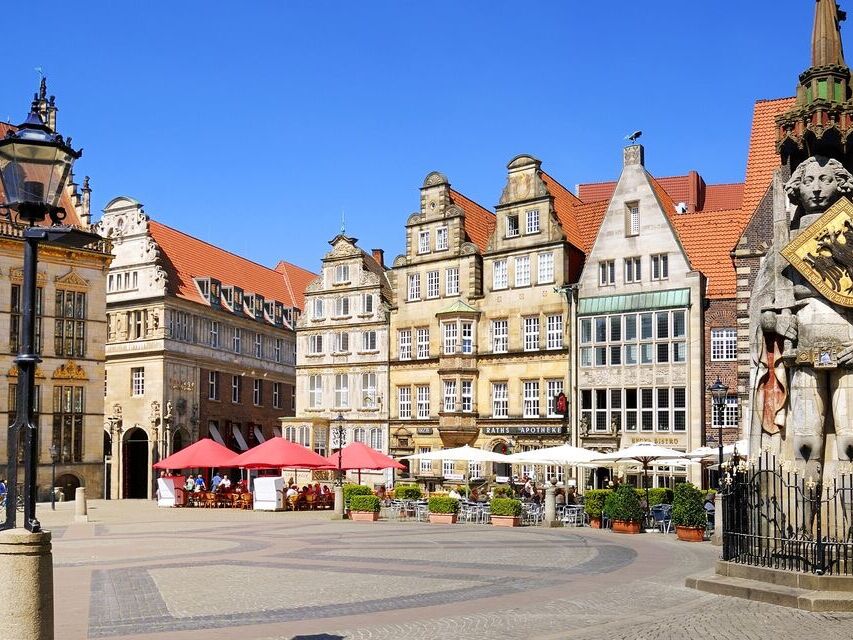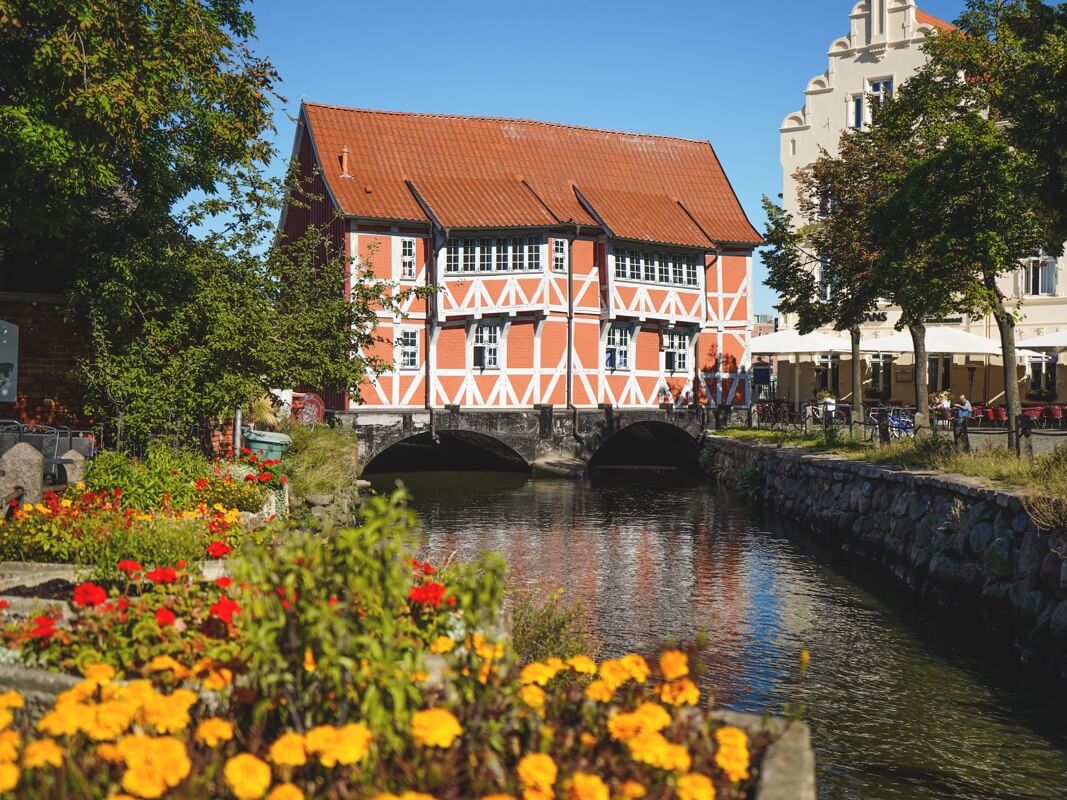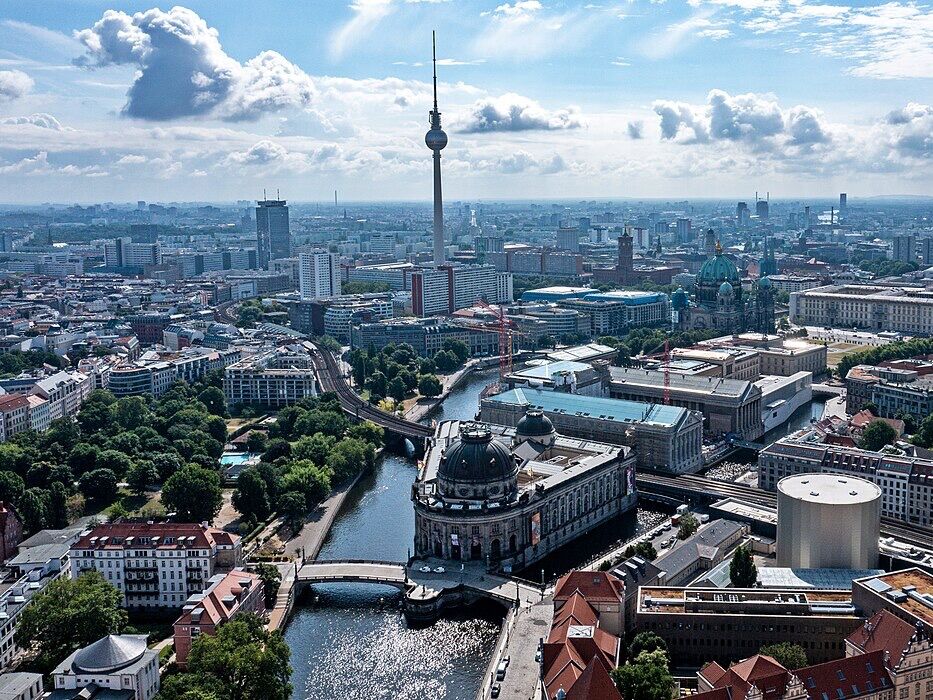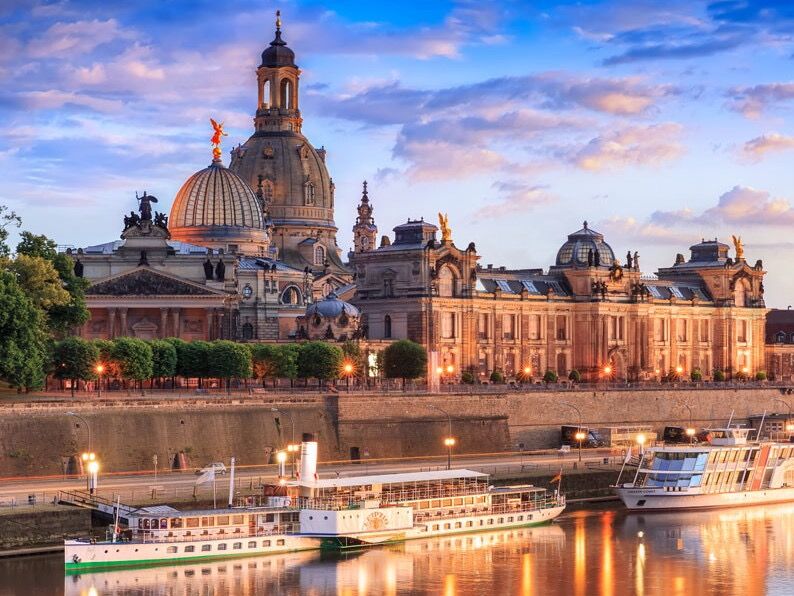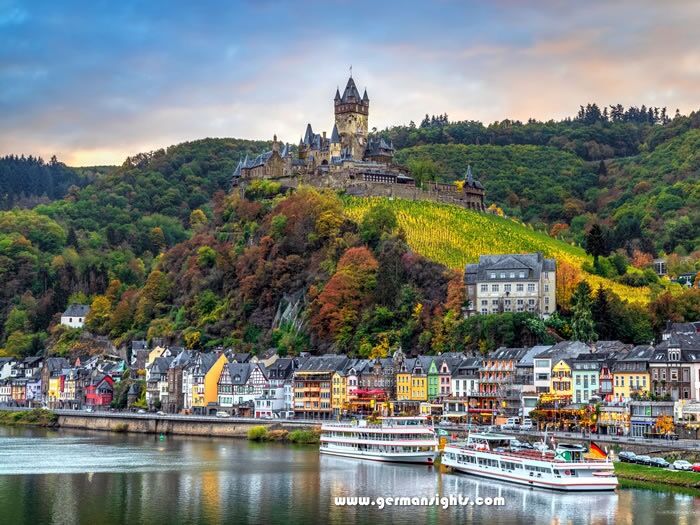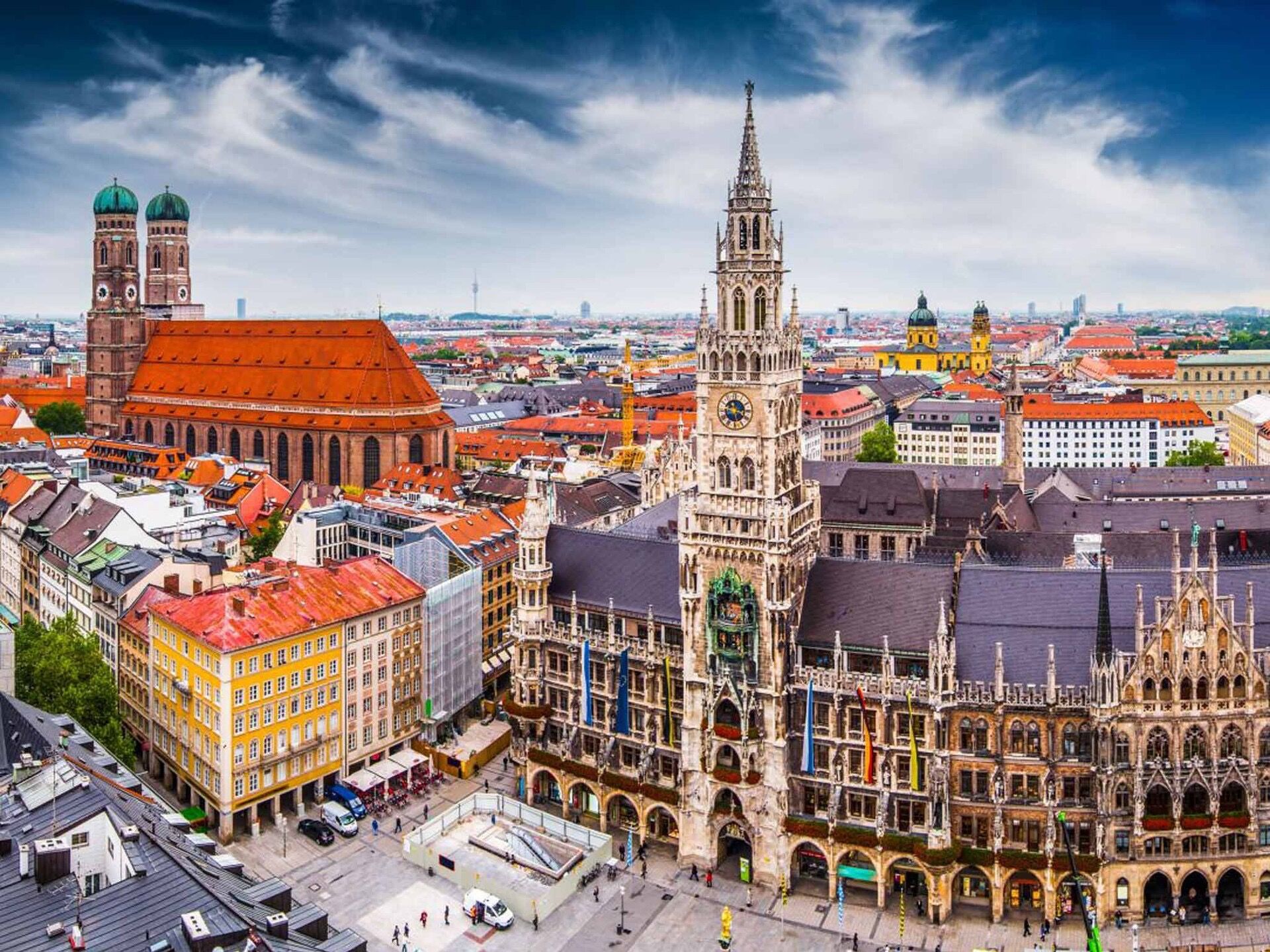
Alana & Christopher
Alana & Christopher
Places around Germany
Some other cities near Hamburg worth visiting
Lüneburg
Charming little Lüneburg is one of those rare, extremely well-preserved German towns that recall quite how much the country lost architecturally in the ravages of the Second World War. Sat serenely on the river Ilmenau, just a 30-minute train ride south east of Hamburg, Lüneburg made its money by mining salt, which also explains the tilt and warp of many of its medieval buildings—the ‘white gold’ industry made Lüneburgers enough money to build beautiful houses, but the mining also created serious subsidence. While the wobbliness is closely monitored for health and safety, it generally adds to Lüneburg’s charms, with almost every corner of the inner Altstadt a picture-perfect run of cobbled alleyways, half-timber houses and volute gables.
Lübeck
Historic ‘Queen of the Hanseatic League’, the proud port of Lübeck is today a Unesco World Heritage site, renowned in particular for its Brick Gothic architecture. Beyond the imperious Holstentor city gate, the Old Town is a network of narrow lanes and gabled houses, with seven historic churches including the towering Church of St Mary. Lübeck is also the setting of Thomas Mann’s Nobel-prize-winning novel Büddenbrooks, which intricately details the nineteenth-century Lübeck bourgeoisie. The Buddenbrooks Museum pays detailed tribute to the life and work of both Thomas and Heinrich Mann.
Schwerin
The Schwerin Schloss, nicknamed the ‘Neuschwanstein of the North’, counts among the most spectacular of Germany’s famous castles. Set on an island in the Schweriner See (not a misspell of ‘Sea’ – this is how the Germans say Lake Schwerin!), the palace is as stunning in its location as in its vast and gilded grandeur. A lavish example of Romantic historicism, it was built between 1847 and 1851, though there are traces of earlier fortresses on the same site dating back to 942. Long the stately residence of the dukes and grand dukes of Mecklenberg, the Schloss today houses the state parliament, but leaves several of its historic rooms, as well as its impressive formal gardens, open to the public. You can reach Schwerin in one and a half hours via regional train.
Bremen
Another Hanseatic stronghold, Bremen remains one of Germany’s most important economic and cultural hubs. Emerging out of the Second World War relatively unscathed, the city has some outstanding historic architecture, not least in the central Marktplatz, or market square, and in the maze of fifteenth- and sixteenth-century half-timber houses that make up the city’s oldest quarter, Schnoor. The Unesco World Heritage town hall is the jewel in the Marktplatz crown—another lofty example of the Brick Gothic style, with a Renaissance façade added in the seventeenth century.
Wismar
A cidade onde Alana e Christopher se conheceram, é também uma cidade histórica e o centro é patrimônio mundial da UNESCO.
Berlin
Uma das principais cidades da Alemanha, é polo político e cultural. Ela é conhecida mundialmente por sua história, cultura diversificada e por ter uma atmosfera cosmopolita, animada e artística.
Extend your trip and enjoy other areas in Germany
Dresden
A cidade está localizada às margens do rio Elba e reúne muita história, arte e principalmente beleza. Embora tenha sido uma das cidades mais destruídas durante as guerras, Dresden hoje esbanja encanto e é considerada por alguns a cidade mais bela da Alemanha.
Vale do Mosel
O vale do rio Mosel possui paisagens espetaculares, com pequenas cidades e charmosas vilas, castelos medievais belos vinhedos.
Além da alta qualidade dos vinhos produzidos na região, seus vinhedos ficam às margens das encostas do rio Mosel, onde tanto uma visita às vinhas, quanto um passeio de barco, se torna um passeio maravilhoso.
Rota Romântica
A Rota Romântica conta com 29 cidades participantes, que estão ao longo de um trajeto em torno de 400 km ligadas por estradas secundárias. Definitivamente é uma estrada linda, que atravessa vilarejos, campos e paisagens encantadoras.
A Rota Romântica liga Würzburg, que fica um pouco para baixo do meio da Alemanha, até Füssen, onde está o maravilhoso Castelo Neuschwanstein, nos pés dos alpes alemães, bem ao sul.
Munich
Munique é conhecida mundo afora pela Oktoberfest, a festa da cerveja que agita a cidade desde 1810. A capital da Baviera, no entanto, é também repleta de belezas e riquezas incalculáveis, um lugar que chama atenção por combinar a tradição com a modernidade.
